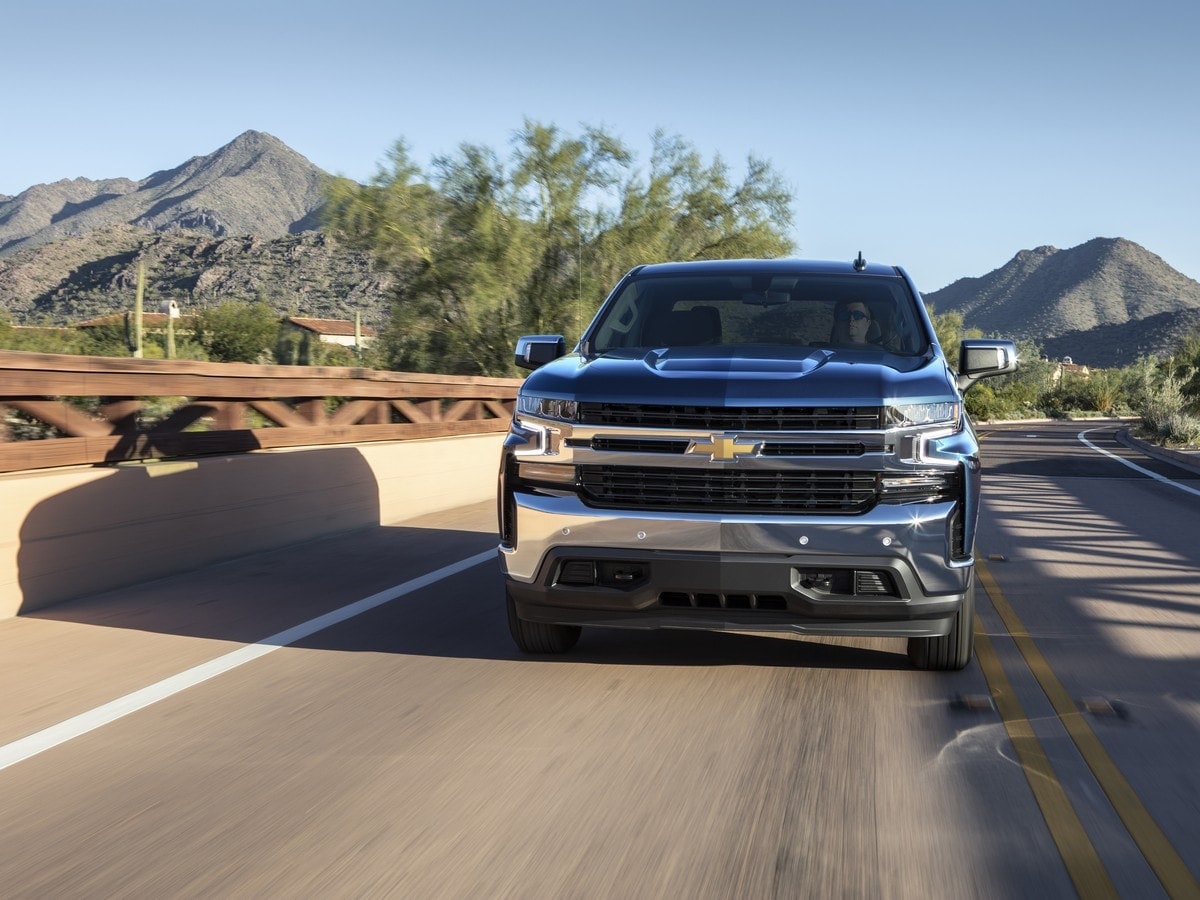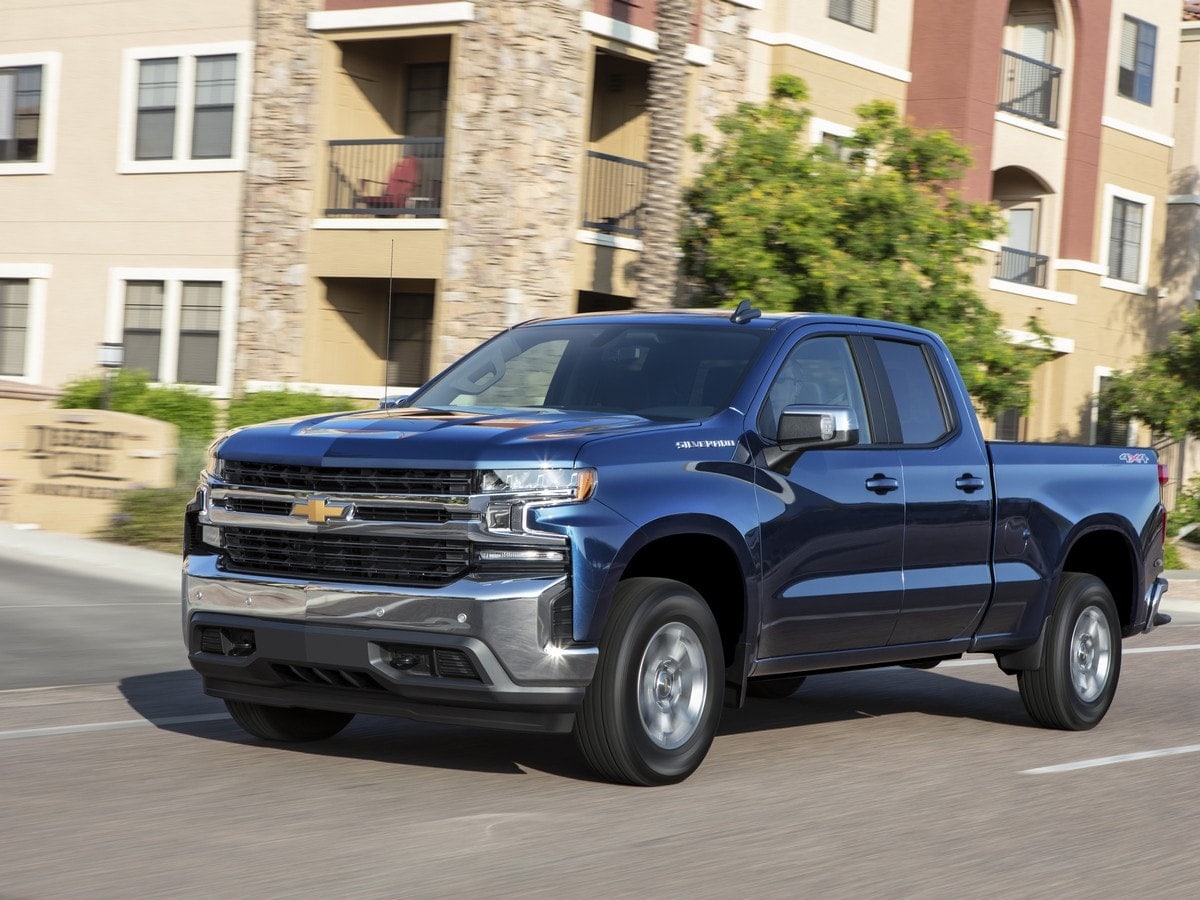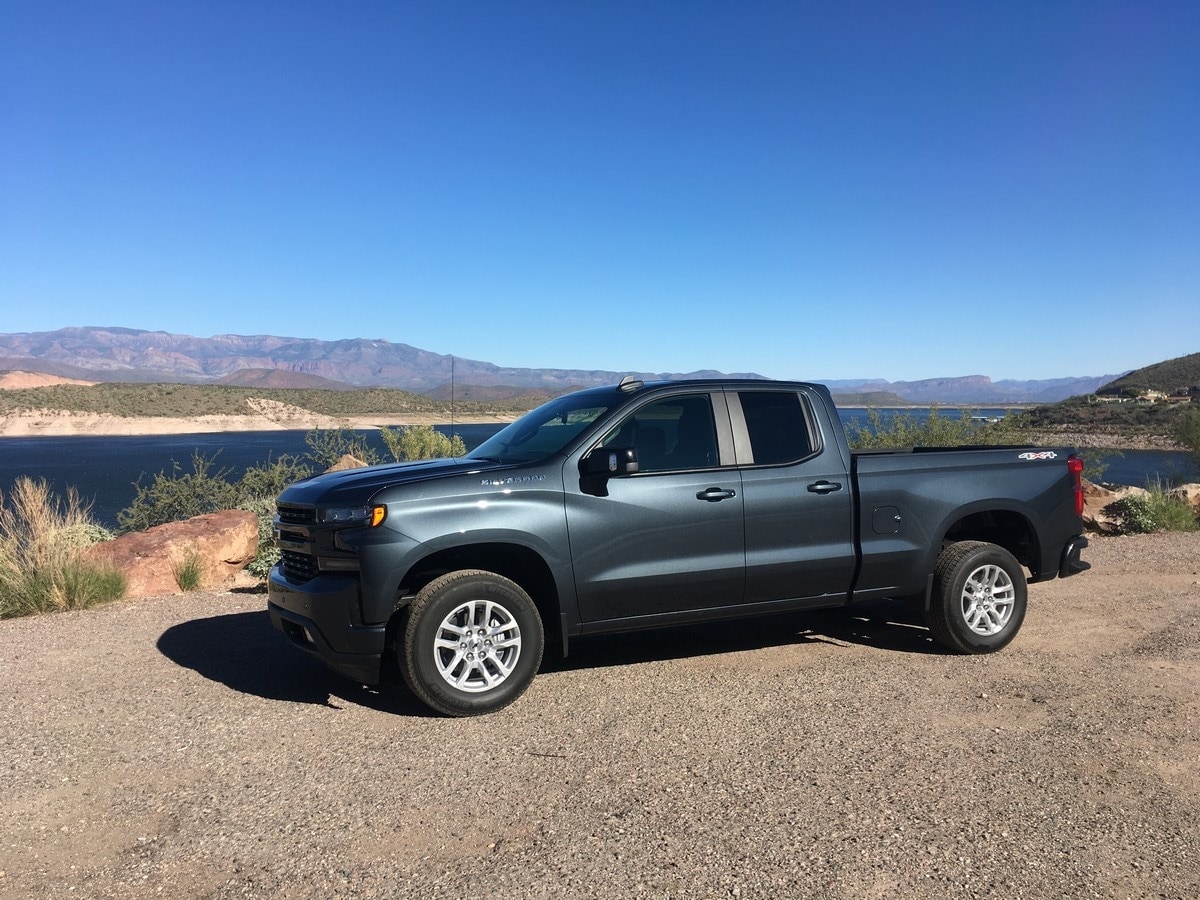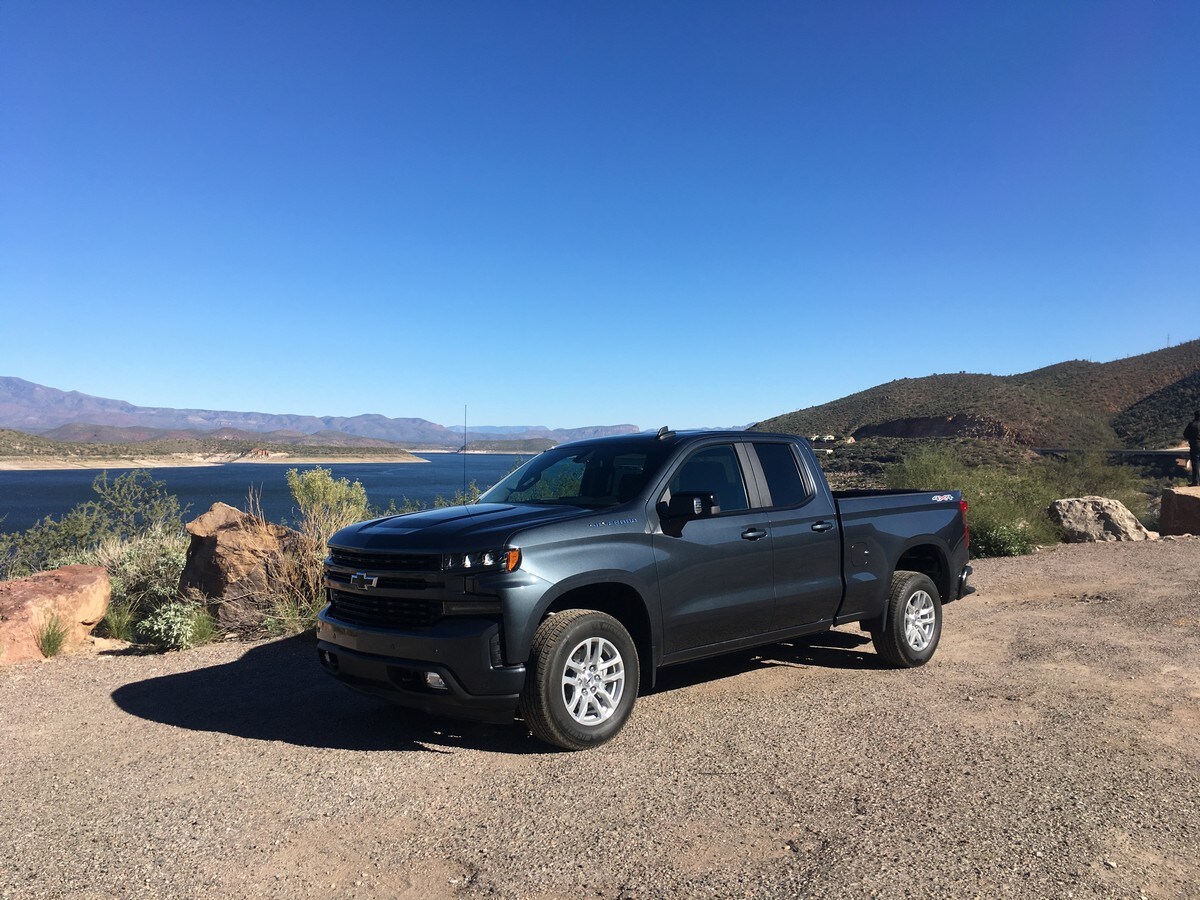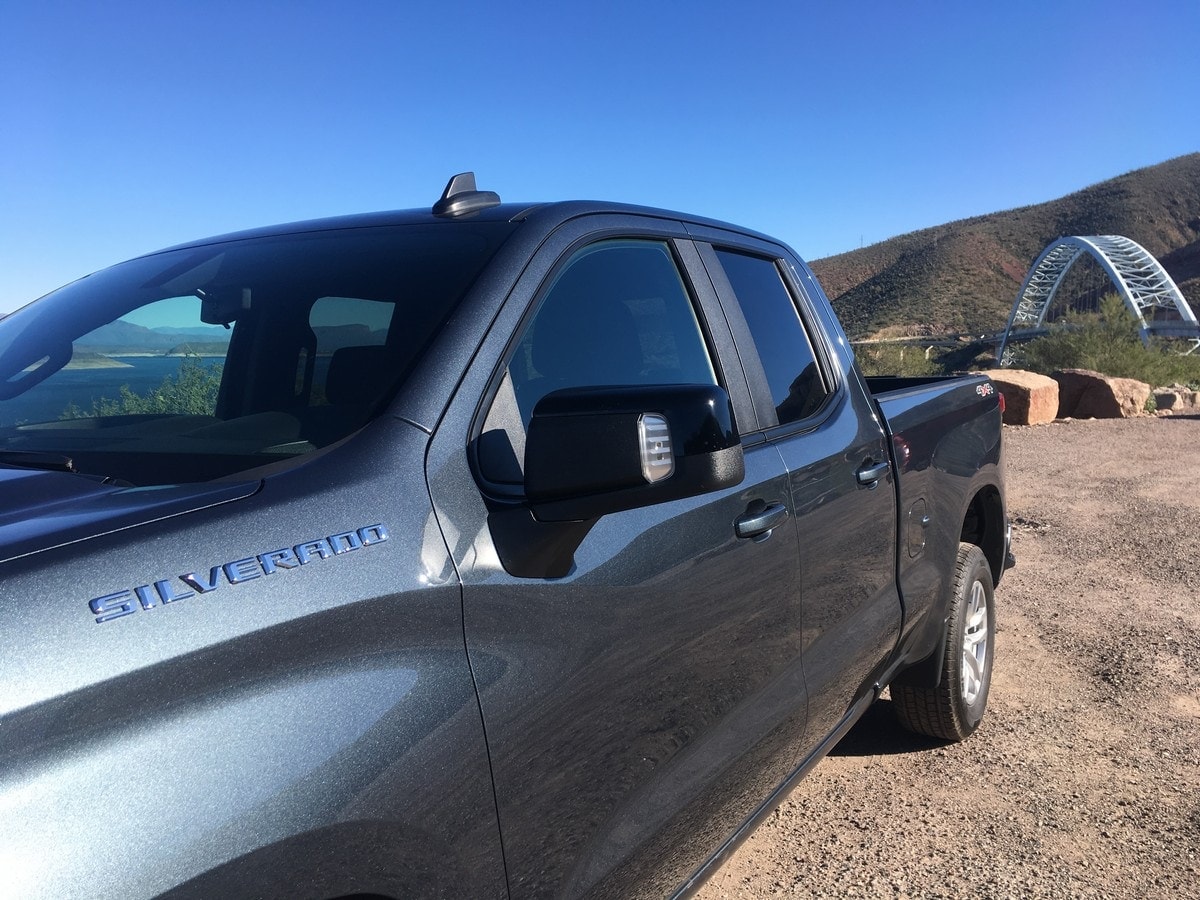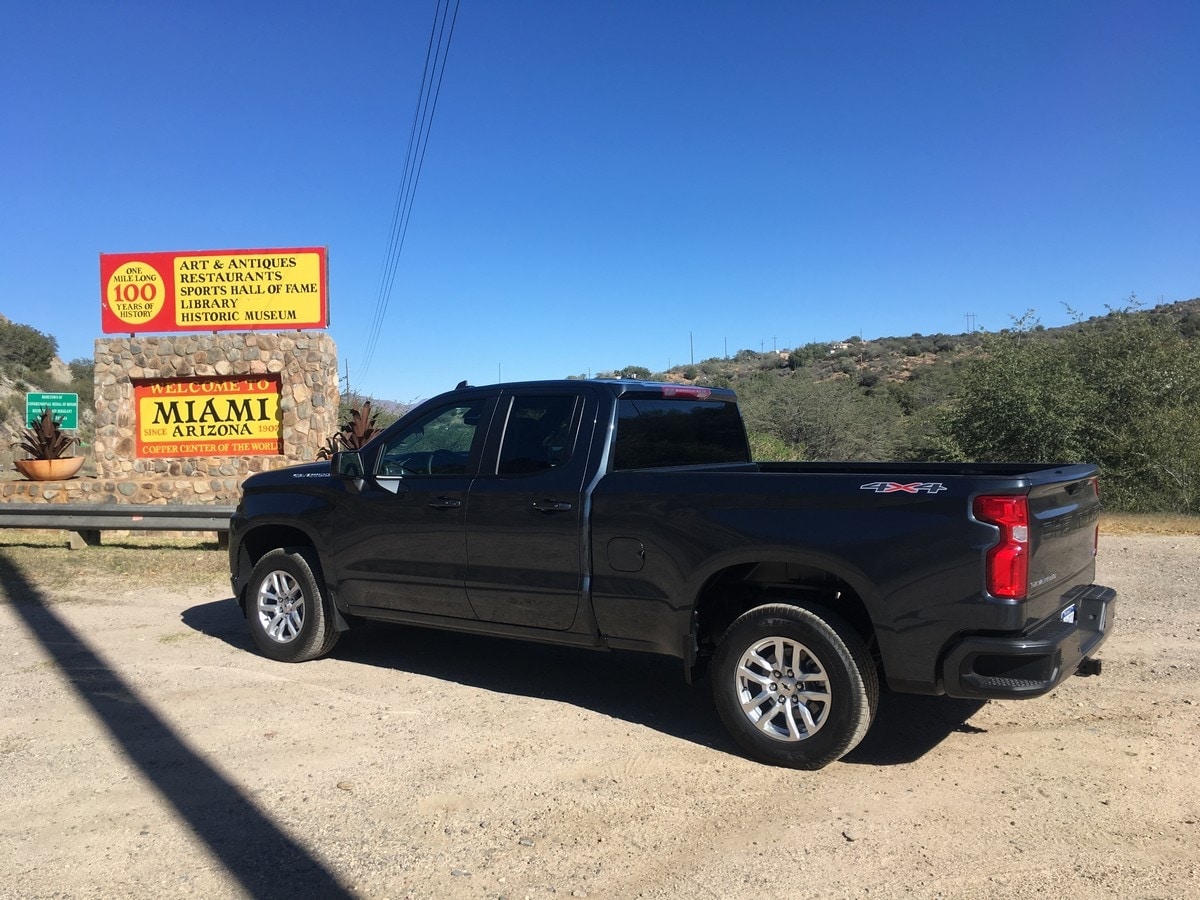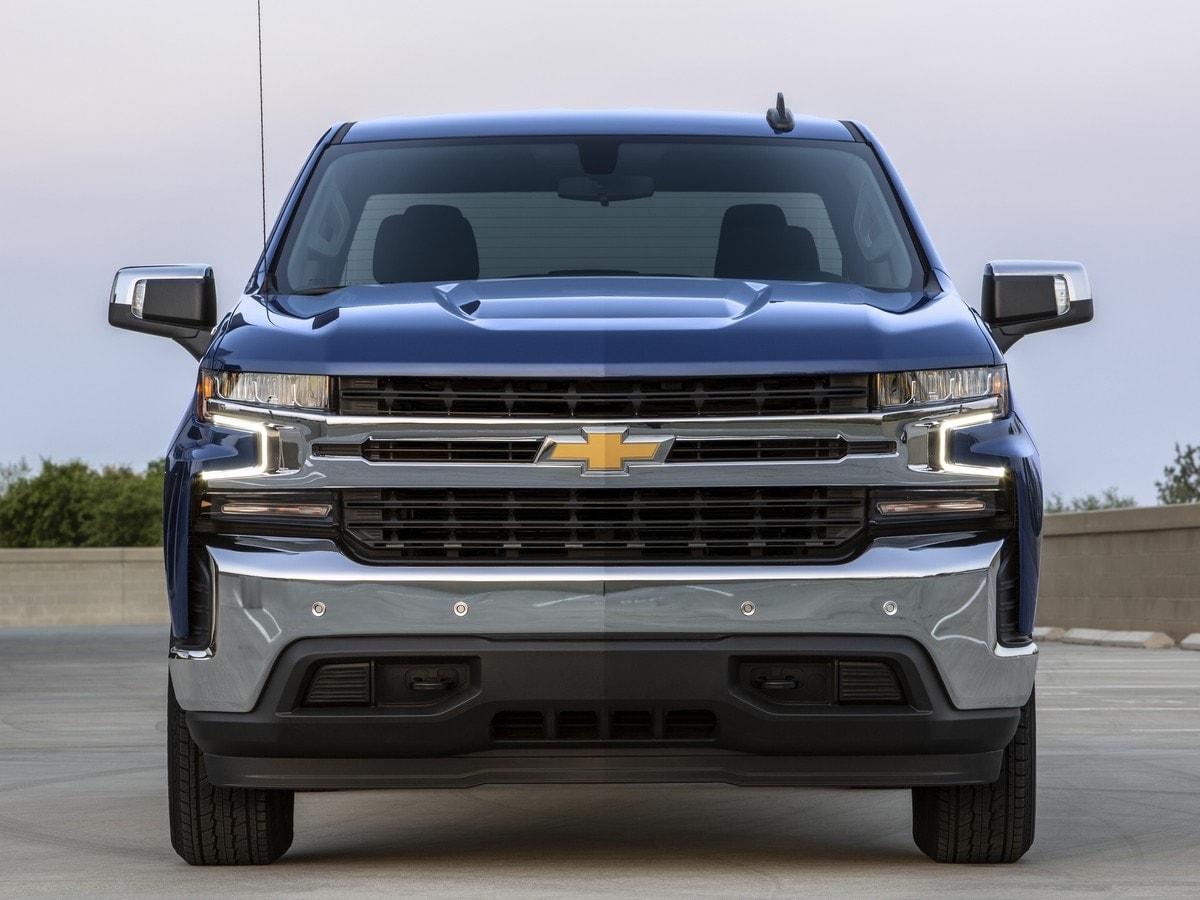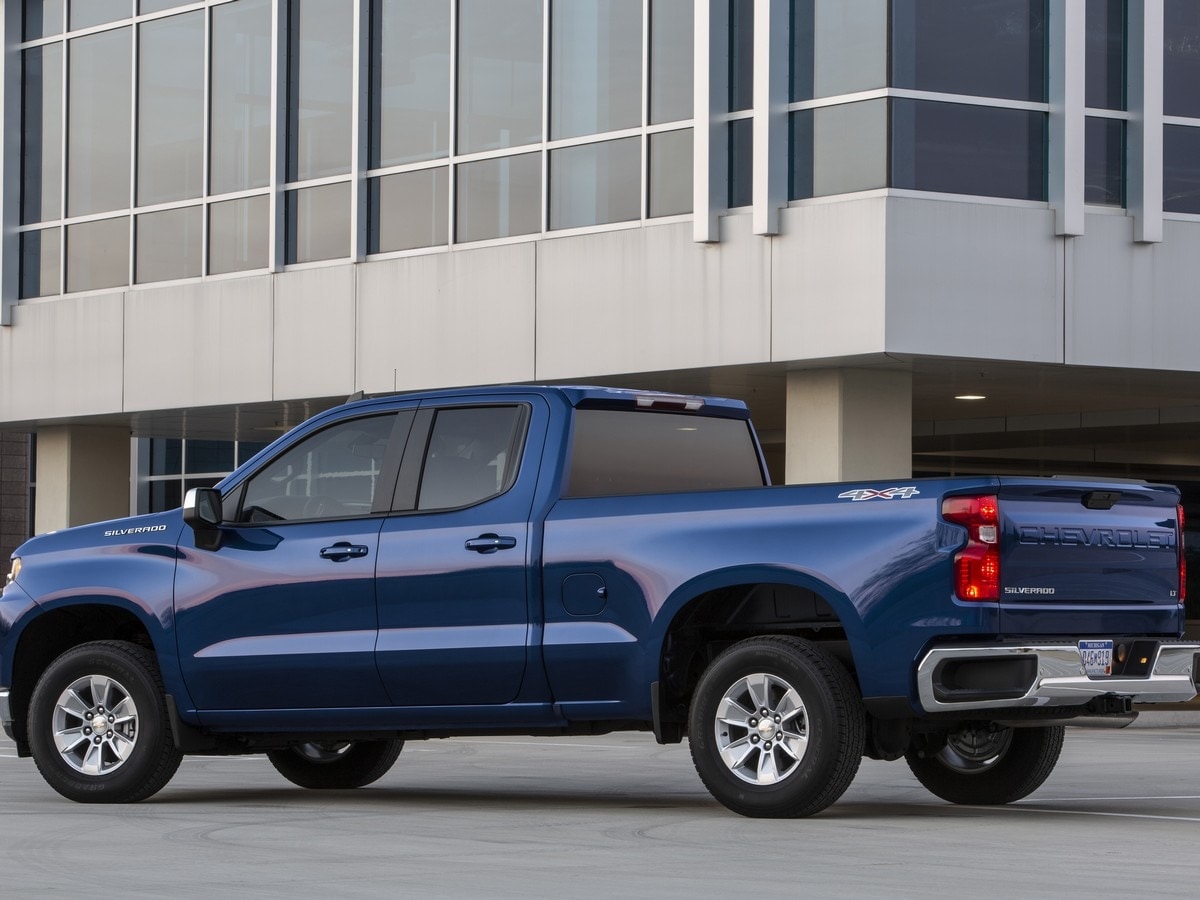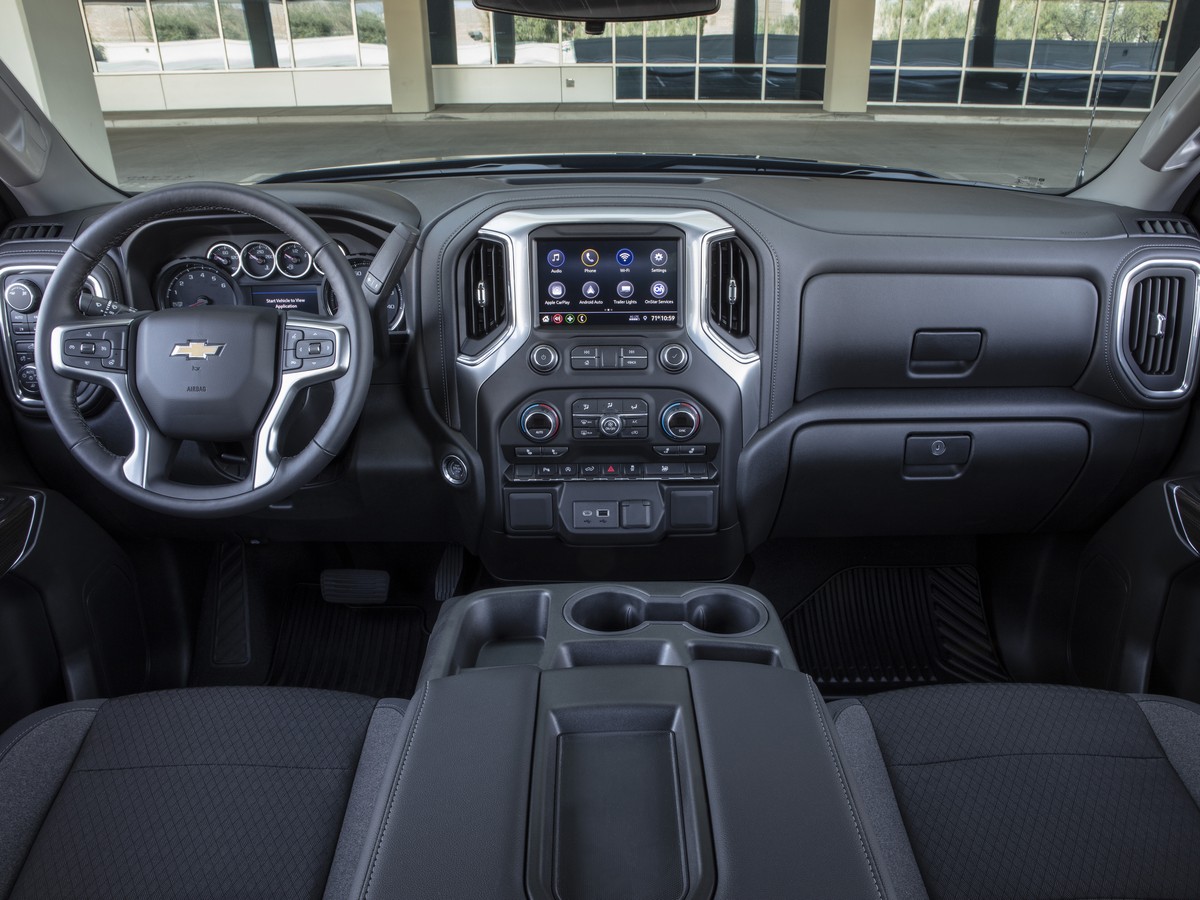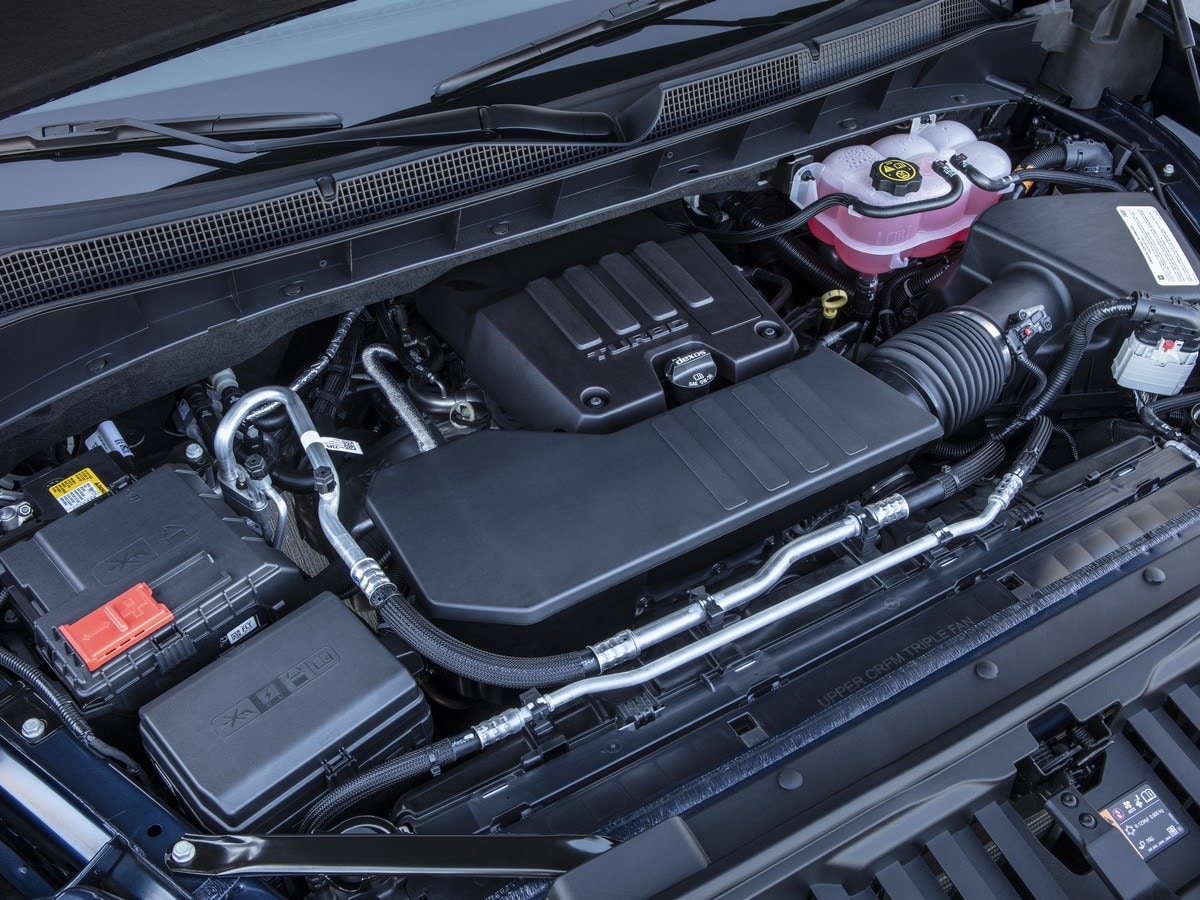- New 2.7-liter turbo is first use of a 4-cylinder in a full-size pickup
- 310 horsepower and 348 lb-ft of torque grant lively acceleration
- 2019 Silverado with 4-cylinder engine starts at $38,395
“A 4-cylinder engine in a full-size truck?!”
That question/exclamation will assuredly come out of the mouths of many upon hearing that the all-new 2019 Chevrolet Silverado is now offering a 4-banger in its popular half-ton pickup. And no doubt, for some truck loyalists the thought of having an engine with half their required cylinder count may seem like sacrilege. Other new truck buyers may just be dubious of such an experiment.
Well, we just drove the 2019 Silverado with its brand-spankin’ new 2.7-liter turbocharged 4-cylinder engine, and are ready to address both worries and questions. Our test took place in Arizona, where Chevrolet invited us to add a couple hundred miles to the odometers of Silverado models with this innovative new powertrain. Our drive started east of Scottsdale and took us along highways and byways through the Tonto National Forest and back. Along the way, the scenery quickly transformed from a sea of cacti to a literal forest of trees as we climbed several thousand feet in altitude.
One of six powertrains
As a quick recap, the Chevrolet Silverado is all-new for 2019. For the revamp, Chevy’s half-ton pickup got the usual improvements of less weight, larger dimensions, improved towing capacity and new technology.
Also part of the story is the variety of powertrains being offered. Once the rollout is complete, that number will total six: a 4.3-liter V6, this new 2.7-liter turbo-4, two variants of Chevy’s tried-and-true 5.3-liter V8, the mighty 6.2-liter V8, and a forthcoming 3.0-liter 6-cylinder diesel. Chevy reps say it’s all about choice. So even if the take rate for the old V6 and the new 4-cylinder is, let’s say only 10 percent, that still adds up when your truck sells hundreds of thousands of units annually.
The variety also allows a large spread in pricing, similar to rival full-size trucks like the Ford F-150 and Ram 1500, the latter of which is also all-new for 2019. A basic Chevy Silverado work truck with the V6 starts just under $30,000, while a loaded Silverado High Country with the 6.2-liter V8 rumbling under the hood can kiss $70,000.
The 2.7-liter 4-cylinder will be the standard engine on LT and RST trims, and available in 4×2 or 4×4 configuration. A 2019 Chevy Silverado LT with the new engine starts at $38,395, while the more street-styled RST variant is a couple grand more, both of these figures being before options.
Though it has two fewer cylinders than the V6, this inline-4 is more powerful. This new engine puts out 310 horsepower and a hearty 348 lb-ft of torque. The aging V6 is only good for 285 horsepower/305 lb-ft of torque. Plus, each powertrain has its own characteristics, and can even make this truck feel quite different despite having the same body wrapped around each engine.
Also: Get your first look at the new and redesigned cars of 2019
OK, so how’s it drive?
That last part leads us to our impressions of how a big truck drives with a relatively small engine. The short answer: a lot better than you might expect.
First off, the Silverado with the 2.7-liter turbocharged engine doesn’t feel underpowered. Quite the opposite. It feels lively and lithe. Nail the gas pedal, and this turbocharged Chevy Silverado returns surprisingly quick acceleration. Chevy pegs this Silverado’s 0-60 mph time at 6.8 seconds – that’s over a second quicker than the previous model with the 4.3-liter V6.
Shifts come via a smooth 8-speed automatic transmission that works just as it should. It goes about its business mostly in the background, but is happy to kick down gears when prodded. On the left-hand side of the dash, near the top, is a dial that optimizes the powertrain for towing or a Sport mode. We didn’t get a chance to tow with this new Silverado, but did use Sport mode a few times. We didn’t notice a vast difference, but that’s more a compliment to the already spunky engine than a judgement on the mode’s deficiency.
The new Silverado is already notably lighter than the outgoing model – to the tune of some 400 pounds. With this smaller engine, it feels even more responsive. We’ve already noted that the all-new 2019 Silverado drives smaller than its dimensions would suggest, and the 4-cylinder variant only helps that impression. If you don’t think that a full-size truck can be powered by a 4-cylinder engine, drive this Silverado and see if it doesn’t change your mind.
Granted, it’s not a V8 and Chevy well knows that buyers who love a V8 pickup probably won’t give up those extra cylinders for a boosted four. But as an alternative to a naturally aspirated V6, we can get on board with this engine. In fact, compared to a Ford F-150 with its 3.3-liter V6 and Ram 1500 with its 3.6-liter V6 and eTorque-enhanced powertrain, the Chevrolet feels more energetic and exciting.
Towing capacity & fuel economy
This engine is rated to tow up to 7,000 pounds, just 100 pounds shy of the V6’s max. Again, we didn’t have the opportunity to tow, so our formal evaluation on that aspect will have to wait. But we imagine that if you plan to regularly hook up a trailer, you’ll have already decided to go with one of the Silverado’s gasoline V8 engines or possibly wait for the diesel 6-cylinder, which is slated to arrive next year.
As for fuel economy, while the idea of a 4-cylinder might bring up thoughts of super efficiency, that isn’t necessarily the case. The Silverado’s 2.7-liter engine is the most efficient one in the lineup at present, yes (the diesel has yet to be rated), but it ratings are something of a mixed bag.
Two-wheel-drive variants max out at 20 mpg city/23 mpg highway according to EPA figures, while 4-wheel-drive models earn up to 19/22 mpg. Combined, the respective models earn 21 mpg and 20 mpg. Some of the Silverado’s V8 variants, however, aren’t far behind that number. Two-wheel-drive models can earn up to 17/24 mpg, while 4-wheel-drive V8 models are rated up to 16/22 mpg. Combined mileage for V8 models is up to 19, just 1 mpg behind that of the 4-cylinder.
Those fuel economy figures won’t exactly have rivals shaking in their knees, either. Ford’s F-150 with a 2.7-liter EcoBoost V6 turbo engine is rated up to 26 mpg on the highway, while its base 3.3-liter V6 hits 25 mpg. The Ram 1500 also tops out at 25 mpg. Both of those competitor trucks can achieve 22 mpg combined – 1 better than this new Chevy’s best.
On the positive side, however, is that the turbocharged 2.7-liter can run just fine on regular unleaded.
2019 Car Reviews: First takes on new models
Uncharted territory – for now
You could say Chevy is taking a chance as the first major automaker to use a 4-cylinder engine in a full-size truck. But keep in mind it wasn’t that long ago that Ford started using boosted V6s in its best-selling F-150, and that strategy has been a major success.
For now, this is the only application for the 2.7-liter turbo engine. But that’s “for now.” From our first encounter with it, we can testify that it’s a great powerplant. This 4-cylinder indeed has the guts to move a full-size truck, and we can only imagine — and hope — that it will find further uses in GM’s portfolio.

